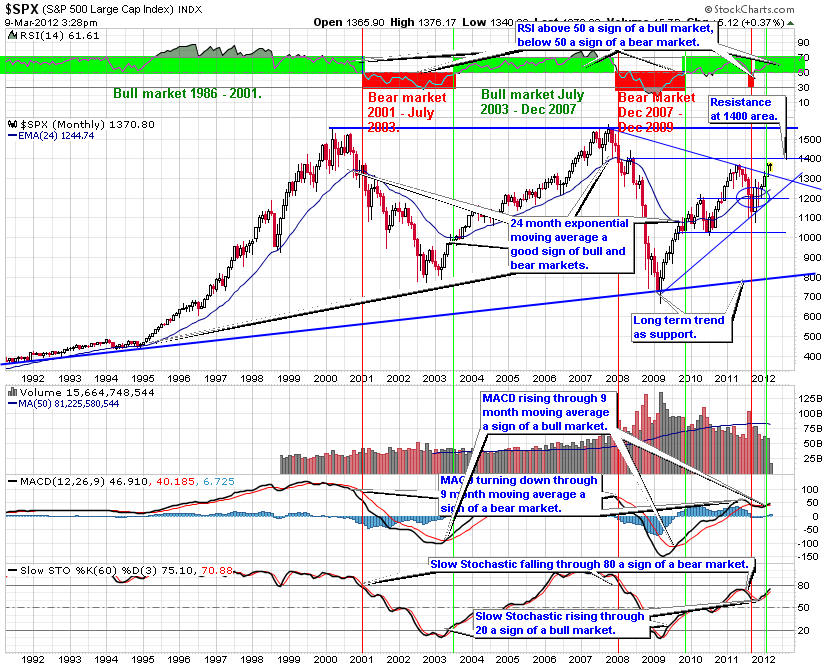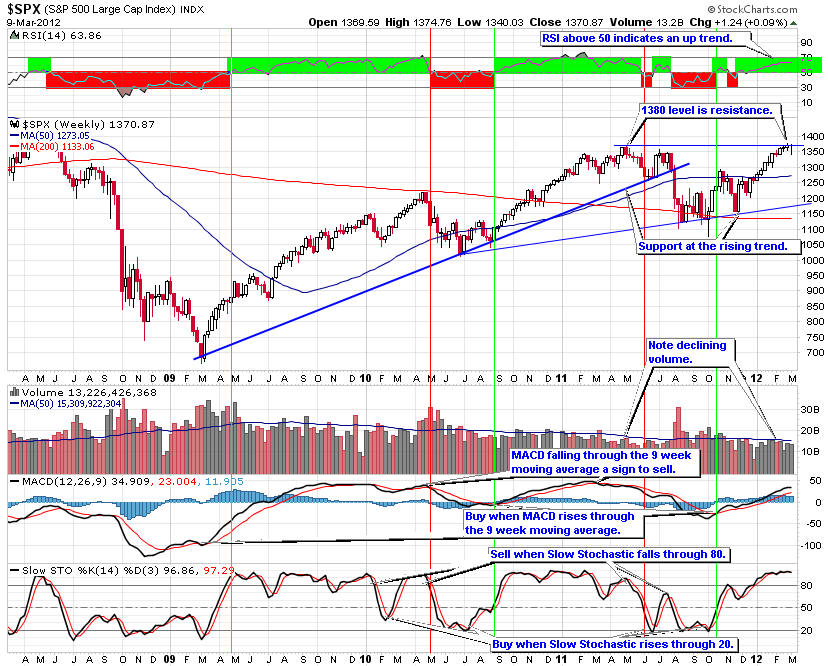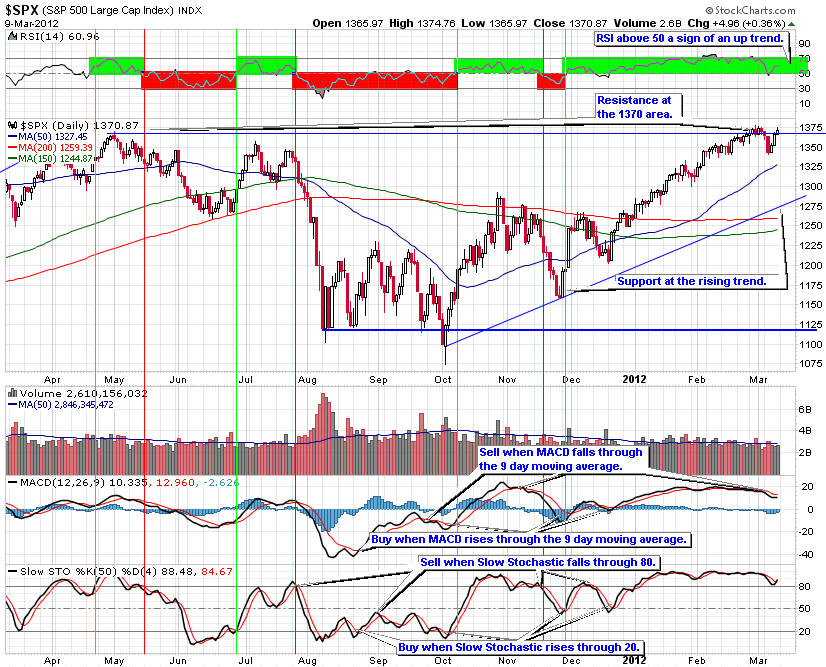

This is monthly chart for the S&P 500 showing 20 years of performance. Since this index is the one used by professional traders, it is important to understand how it is performing. This chart is also excellent at defining the longer term trends for the market.
The bull market of the last five years broke down when the S&P 500 turned down through the 24-month exponential moving average. The bear market began when the index fell through the 24-month exponential moving average. Also, the RSI tested the 50 level, another important indicator of bear markets (if the RSI remains below 50 then we are in a bear market) and turned back down. The MACD crossing down through zero is another sign of the transition from bear market to bull market. Finally, the Slow Stochastic fell through 80 as another sign of the beginning of the bear market.
The rally that began in early March has continued into early December. Looking at the chart we can say the bear market is over.
The Slow Stochastic and the MACD have already signaled an end to the bear market. The index closed above the 24-month Exponential Moving Average in November. The RSI has crossed through 50, the final signal the bear market is over.
November is the beginning of what is considered the best six months of the year. Therefore, we should expect the market to relatively well.
For now, I intend to invest as though we are in a more normal market that will see rallies and then pull backs. The rally of the last eight months came as a rebound from an oversold condition as investors feared the worse. Going forward, we will experience market rallies and pull backs as the economy struggles to expand. The overall trend will be more sideways.
You can click on the link below to see a current version of this chart.

The four-year weekly S&P 500 trend chart shows that the market is at an important transition point. The price is trying to push through resistance of the multi-year down trend. If the index is successful, look for the next resistance level to be the 1240 area or the 200-week moving average.
The rising trend that has been support since the rally started in March. As long as this support holds, the rally will continue.
RSI is above 50, a sign of an up trend. The MACD continues to rise, though it is reaching a high point where it will eventually turn down, giving a sell signal. The Slow Stochastic fell through 80 giving a sell sign and then rebounded. The next time it falls through 80 it will give another sell signal.
The weekly chart pattern indicates the S&P 500 continues to rally. Monitor support to be sure it holds. If the resistance at the descending trend fails, look for the rally to continue.
You can click on the link below to see a current version of this chart.

A rising channel is the most definitive pattern for the daily S&P 500. This is a bullish formation. Support is the lower rising trend and the 50-day moving average. Resistance is at the 1100 area and the upper rising trend. Volume is trending down as the institutions are no longer buying. This is a worrisome sign, as it takes buying volume to push the market up.
RSI is above 50 indicating an up trend. The MACD is at a high point where it normally turns down through the 9-day moving average, giving a sell sign. The Slow Stochastic remains above 80 where it will turn down giving a sell sign eventually.
The daily chart of the S&P 500 is telling us the rally is pausing. Without more volume it will be hard for it to climb much further. Therefore, it is prudent to add down side protection to your portfolio and/or be ready to sell some of your long positions. We are entering a period of consolidation with the market trending in a range with multi-week rallies followed by multi-week pull backs.
This will cause us to change our strategy going forward. Selecting the right sectors and stock picking will become more important to your success. Look to buy on dips in the market to important support levels. Then add down side protection at interim high points using trailing stops and protective put options to help improve the overall return. Covered calls options will also work well when the market is not rising as rapidly as the last nine months.

Given this analysis of the S&P 500 trend line charts, it is important to have your portfolio positioned for a market that is more likely to trend in a range with more cyclical rallies and pull backs.
The charts of the S&P 500 trend lines provide a good way for investors to align their portfolios with the overall market trends. Picking the right sectors and stocks will become even more important. Look to buy on dips in the price of the S&P 500 trend charts on the next pull back. Be sure to use proper capital management techniques including trailing stops, protective put, covered call options and position sizing. When the pull back ends, look to add to long positions with stocks and ETFs from the sectors that are likely to outperform the overall market. Keep in mind, Warren Buffett's first rule of investing is to not lose money. Be patient waiting for good entry points.
Our Premium Members receive weekly analysis of market trends of all major indexes and industry sectors. They also receive frequent updates when conditions warrant, so they are prepared to trade and invest with the trend. Moreover, our stock and sector portfolios have beat the market every year since our inception in 2005. For 2009, our stock portfolio is up over 22% for the year.
Request a membership with a free four week subscription to our Premium Members pages and receive:
If you decide to continue at the end of the four-week trial your subscription starts automatically. If you decide to cancel before the end of the trial, you will not be charged a thing. No risk, no obligation.
Give the Premium Membership a try. You have nothing to lose and a lot to gain and we have beat the market every year since our inception.
If you are interested in a free monthly newsletter on the stock market trends, please send an email to [email protected] with your email address stating you wish to receive the Free Monthly Newsletter and you will be added to the list.